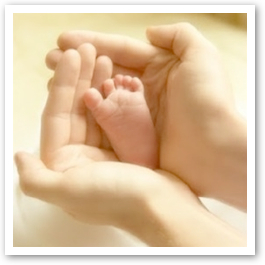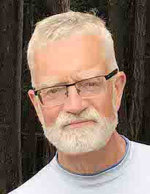Difficult Pregnancies, Precarious Choices, and the Absolute Value of Innocent Live
- FATHER TADEUSZ PACHOLCZYK
Some medical conditions can be made worse by becoming pregnant.
 |
Pulmonary hypertension, for example, is often exacerbated by pregnancy: the additional blood volume of the pregnancy burdens the mother's weakened heart and, in extreme cases, can result in heart failure and the death of both mother and child.
Although direct abortion is sometimes counseled to pregnant women who face this life-threatening difficulty, such a choice can never be moral. In these circumstances, medical strategies which seek to care for both mother and child need to be pursued, as they often provide satisfactory outcomes for both.
Recent advances in obstetrics and pre-natal medicine, along with so-called "expectant management" (close monitoring of a pregnancy with tailored interventions), have enabled an ever greater number of these high-risk pregnancies to be managed at least until the child reaches viability. Labor can then be induced or a C-section delivery can be scheduled. This ordinarily allows both mother and child to be saved.
An April 2010 research study showed impressive survival rates for pregnant mothers with pulmonary hypertension. This was achieved by combining multi-specialty collaboration with planned and managed delivery. The results, published in the British Journal of Obstetrics and Gynecology (BJOG), indicated that all nine of the patients in the small study group survived along with their unborn children.
Nevertheless, there are times when our best medical efforts to save both mother and child will fail, and we face the heart-wrenching situation where nature may have to take its course. In these circumstances, some ask: Wouldn't a direct abortion be permissible to save the mother (for example, a suction curettage procedure, a common form of abortion where the fetus is often dismembered and parts are evacuated from the uterus)?
An analogy can help us grasp the unacceptability of direct abortion in a situation like this.
Let's suppose that several firefighters enter a burning building to evacuate a child trapped on the 3rd floor. The firefighters discover that part of the building has collapsed onto the only stairwell, with heavy, immobile concrete girders blocking the passageway further up to the landing. There is only a small hole in the girders that the firemen would need to crawl through to get to the trapped child, but the passage is blocked by the body of a man who collapsed from smoke inhalation right in the crawl space where the firefighters need to go. He is wedged in there in such a way that his unconscious, but living, body cannot be moved aside or out of the way.
As the fire pulses dangerously around them, it becomes apparent that the only way the firefighters might be able to quickly pass would be to take a saw and cut the body of the collapsed man into pieces, causing his death, and then pull out sections of his body until a passage large enough for them to pass through had been opened up. Clearly, the firefighters would be obligated to try everything else to save the child and the collapsed man (shifting his body this way or that, trying to rouse him from his unconsciousness, etc.) but they could never choose to directly kill him by cutting up his body, even for the very good reason of gaining access to the next floor and saving the trapped child.
|
Better two deaths than one murder. |
This example points towards an old adage sometimes cited by moralists: Better two deaths than one murder. Some might say that "murder" would not fit here, given that the term generally connotes a callous, wanton, and premeditated act of killing, instead of an urgent, emotional and difficult decision in the face of few or no alternatives. But even the strongest emotion and the greatest difficulties surrounding such cases must be focused through the lens of a similar affirmation: Better two deaths than the direct taking of an innocent life.
Directly killing an innocent human being, even in the hopes of saving his or her mother, is an instance of engaging in an intrinsic – or absolute – evil, even if good may follow. By always repudiating the direct killing of the innocent, and acknowledging that this represents an exceptionless norm, we set in place the framework to safeguard human dignity at its root. Affirming this most basic norm leads us away from the injustice of playing God with other people's lives. These challenging "life of the mother" cases allow us to begin acknowledging some of our own limitations, and the mystery of God's greater Providence, in the realization that we may not be able to "manage" or "correct" every difficult medical situation we face.
 This is J. Fraser Field, Founder of CERC. I hope you appreciated this piece. We curate these articles especially for believers like you.
This is J. Fraser Field, Founder of CERC. I hope you appreciated this piece. We curate these articles especially for believers like you.
Please show your appreciation by making a $3 donation. CERC is entirely reader supported.

Acknowledgement
Father Tadeusz Pacholczyk, Ph.D. "Difficult Pregnancies, Precarious Choices, and the Absolute Value of Innocent Live." Making Sense Out of Bioethics (July, 2010).
Father Tad Pacholczyk, Ph.D. writes a monthly column, Making Sense Out of Bioethics, which appears in various diocesan newspapers across the country. This article is reprinted with permission of the author, Rev. Tadeusz Pacholczyk, Ph.D.
The National Catholic Bioethics Center (NCBC) has a long history of addressing ethical issues in the life sciences and medicine. Established in 1972, the Center is engaged in education, research, consultation, and publishing to promote and safeguard the dignity of the human person in health care and the life sciences. The Center is unique among bioethics organizations in that its message derives from the official teaching of the Catholic Church: drawing on the unique Catholic moral tradition that acknowledges the unity of faith and reason and builds on the solid foundation of natural law.
 |
 |
 |
The Center publishes two journals (Ethics & Medics and The National Catholic Bioethics Quarterly) and at least one book annually on issues such as physician-assisted suicide, abortion, cloning, and embryonic stem cell research. Educational programs include the National Catholic Certification Program in Health Care Ethics and a variety of seminars and other events.
Inspired by the harmony of faith and reason, the Quarterly unites faith in Christ to reasoned and rigorous reflection upon the findings of the empirical and experimental sciences. While the Quarterly is committed to publishing material that is consonant with the magisterium of the Catholic Church, it remains open to other faiths and to secular viewpoints in the spirit of informed dialogue.
The Author
 Father Tadeusz Pacholczyk earned a Ph.D. in Neuroscience from Yale University. Father Tad did post-doctoral research at Massachusetts General Hospital/ Harvard Medical School. He subsequently studied in Rome where he did advanced studies in theology and in bioethics. He is a priest of the diocese of Fall River, MA, and serves as the Director of Education at The National Catholic Bioethics Center in Philadelphia. Father Tadeusz Pacholczyk is a member of the advisory board of the Catholic Education Resource Center. Go here to read more by Father Pacholczyk.
Father Tadeusz Pacholczyk earned a Ph.D. in Neuroscience from Yale University. Father Tad did post-doctoral research at Massachusetts General Hospital/ Harvard Medical School. He subsequently studied in Rome where he did advanced studies in theology and in bioethics. He is a priest of the diocese of Fall River, MA, and serves as the Director of Education at The National Catholic Bioethics Center in Philadelphia. Father Tadeusz Pacholczyk is a member of the advisory board of the Catholic Education Resource Center. Go here to read more by Father Pacholczyk.


